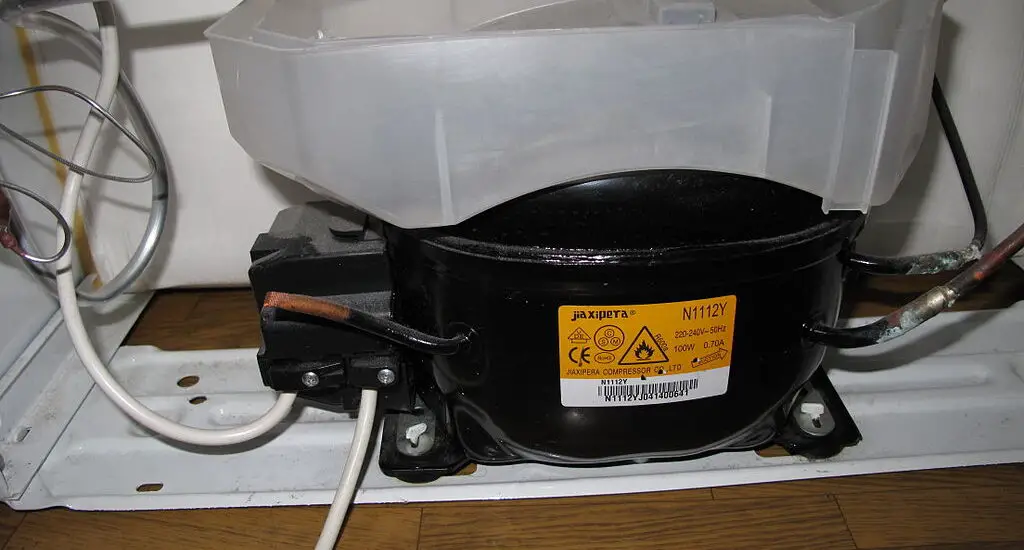Did you know the compressor is the heart of your fridge? Its performance can make or break the efficiency of your refrigerator. That’s where a compressor performance test steps in. Understanding this can help you prevent any unfortunate surprises and keep your fridge running smoothly.

Table of Contents
Brief Overview of Compressor Performance Test
In simple terms, a compressor performance test is like a health check-up for your fridge. It evaluates how well your fridge’s heart is ticking away. You know how doctors say prevention is better than cure, right? That’s exactly what this test does for your fridge – it helps identify issues before they snowball into something bigger. Efficient compressors can cut down your electricity bills by up to 20%! Sounds like a reason enough to pay attention, doesn’t it?
Understanding the Compressor Performance Test
Here, we’re going to break down the science behind the test. It’s not rocket science, but it does require a bit of understanding. Stick with us and you’ll see what we mean.
In-depth Explanation of Compressor Performance Testing
Let’s imagine a compressor performance test as a well-organized track and field event. It’s not just about who runs the fastest, but it’s also about who jumps the highest or throws the farthest. Similarly, a compressor performance test isn’t about a single factor but a combination of different parameters that determine the overall performance of your refrigerator’s compressor.
The heart of a compressor performance test lies in the assessment of several important metrics. These include suction pressure, discharge pressure, power input, refrigeration capacity, and the coefficient of performance. It’s like gauging an athlete’s performance not just by his speed, but by his stamina, agility, and strength too.
For instance, the suction and discharge pressures tell you about the pressure difference maintained by the compressor, which is crucial for the refrigeration cycle. The power input reveals how much electrical energy is being consumed. The refrigeration capacity provides information on the cooling ability of the system.
The coefficient of performance, on the other hand, is a measure of the efficiency of the system, comparing the cooling capacity to the power input. Together, these parameters paint a comprehensive picture of your compressor’s performance, much like an athlete’s scorecard.
Tools Needed for Compressor Performance Test
Every task needs the right set of tools, doesn’t it? A compressor performance test is no different. It’s like baking a cake – you need measuring cups, a mixer, a baking tray, and an oven. For this test, you’d need a few technical tools, like pressure gauges, thermometer, ammeter, and wattmeter, to name a few. Trust us, with these at your disposal, you’d be cooking up some serious refrigerator efficiency!
Procedure of Compressor Performance Test
Now that you know what the test measures, let’s talk about how it’s done. Like conducting a track and field event, there’s a certain procedure to follow to ensure the test is carried out effectively and safely.
1. Setup: The first step is to set up your testing equipment. This involves connecting your compressor to the power source and attaching your pressure gauges and other measuring tools to the compressor. It’s like setting up the track, placing the hurdles, and getting the timers ready before the race.
2. Baseline Measurements: Before you begin the test, you need to take baseline measurements of pressure, temperature, and power input. This provides you with a reference point to compare with your test results. It’s akin to noting the initial conditions of the track, the weather, and the participants’ stats before the race.
3. Running the Test: Next, you start the compressor and begin monitoring its performance. The aim is to observe how the compressor responds under different operating conditions, noting any changes in the key metrics. It’s like observing the athletes as they race, jump, or throw, tracking their performance at each stage.
4. Data Analysis: Finally, once the test is completed, you analyze the data. You compare the results against the baseline measurements to identify any changes or issues. This could help detect potential problems in the compressor’s performance and suggest possible solutions, much like a coach analyzing his team’s performance to devise strategies for future races.
Remember, safety is paramount during this procedure. Always ensure to follow the manufacturer’s guidelines and take necessary precautions when conducting a compressor performance test. It’s like ensuring the safety of the athletes – it’s always better to be safe than sorry.
Check out these other related articles…
Compressor Volumetric Efficiency: Your Comprehensive Guide
Compressor Adiabatic Efficiency: Your Ultimate Guide
Compressor Energy Efficiency: Your Comprehensive Guide
Compressor Performance Curve: Your Ultimate Guide
Compressor Isentropic Efficiency Formula: An In-Depth Guide
Importance of Regular Compressor Performance Tests
Just like regular health check-ups help us stay on top of our health, regular compressor performance tests keep our refrigerators in top shape. But how often should you do it? And what’s the payoff?
Benefits of Regular Testing
Regular testing can help spot problems before they become major issues. Plus, it can improve your fridge’s efficiency and even extend its life. Isn’t it better to address a small hiccup now rather than face a total breakdown later? This could save you from unnecessary repairs or replacements that can cost a pretty penny.
Frequency of Compressor Performance Testing
So, how often should you conduct these tests? Well, the frequency depends on a few factors such as the age of your refrigerator, its usage, and the environmental conditions. But, as a rule of thumb, experts recommend doing it at least once a year. It’s like going for a dental check-up – you might not enjoy it, but you’ll definitely appreciate its benefits.
